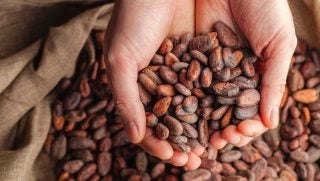If you are a dairy farmer, an avid food preserver, or a beer drinker, you already know and love fermentation. It’s amazing how fermentation can turn corn into silage, barley into beer, and cucumbers into pickles. Fermentation changes the taste and texture of food and can enhance the nutritional package of food.
Fermentation isn’t just a food preservation method — it transforms one food product into another. Have you ever wondered how fermentation transforms food?
I know I have thought a lot about this. Not only did I grow up on a dairy farm where we have long fed fermented corn silage and haylage to the cows every day, but I also grew up just outside Phelps, New York, known as the sauerkraut capital of the world. My friends and I will never forget how the sauerkraut factory fired up each spring because the smell would fill the hallways of our school!
Fermented foods make many people think of probiotics, but that’s actually a bit of a misconception. While many fermented foods contain live and beneficial microbes and bacteria that could positively impact our gut health, these good microbes and bacteria don’t make the cut to be a probiotic.
A probiotic is defined as a strain of microbes or bacteria that provide health benefits when consumed. Fermentation unlocks many microbes and bacteria, but they often aren’t the strains that are considered a probiotic. This doesn’t mean that fermented foods aren’t good for your gut, and there is plenty of research on what strains of microbes and bacteria are the best for us.
Fermented dairy products like yogurt and kefir have lots of probiotics, but they are added in. Dairy is a fantastic food to harbor probiotics because the fat and protein in dairy protect the probiotics from deteriorating in our stomach and small intestines, dairy helps us to actually digest them.
But these healthy microbes and bacteria that are found in fermented foods are not found in these foods pre-fermentation, which is because the process of fermentation takes carbohydrates like starches and sugars and converts them into alcohol or acid. The fermentation process also synthesizes vitamins and minerals, which of course contribute positively to the nutritional value.
Basically fermenting food means we are letting bacteria and yeast break down our food into simpler compounds before we eat it. If you are lactose intolerant you cannot consume dairy milk, but you can consume some cheeses because, during fermentation, the bacteria eat up the lactose and spit out glucose and galactose, which are sugars that lactose intolerant people can digest.
The fermentation process unlocks the nutritional package of foods because the bacteria is given the opportunity to eat what we can’t digest, and they leave behind nutrients that are easier for our gut.
Next time you’re in the grocery store take a look at the nutritional value of fresh beets versus pickled beets, whole milk versus kefir, or cucumbers versus pickles. The sour fermented taste is an acquired one, but fermented food is versatile, has a long shelf life, and is really good for your gut health!
Fermenting foods at home is cheap and easy, and allows you to keep home grown food in your cupboards all year round! So don’t turn your nose up at horseradish or sauerkraut, it’s actually good for you and should be a staple in your pantry!
Elizabeth Maslyn is a born and raised dairy farmer from Upstate New York. Her passion for agriculture has driven her to share the stories of farmers with all consumers, and promote agriculture in everything she does. She works hard to increase food literacy in her community, and wants to share the stories of her local farmers.



